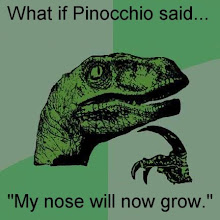
Yes I know I said that this one would be on the
Museum of Texas Tech University but I haven't actually had the time to go through the museum yet so I will get back to that later.
So I was driving between San Antonio, TX and Baton Rouge, LA earlier this month. This drive is just a trip down I-10 which involves driving through Houston. So since I was driving through, and there was an exhibit that I wanted to see (more on that later), I decided I would stop at the
Houston Museum of Natural Science.
This is a large museum with many different portions to their exhibit but since I only had a few hours to spare I decided to focus mostly on the paleontology oriented exhibits since that is more what interests me. The main
paleontology hall you walk into the standard dinosaur hall. This is what you expect to see dinosaur wise from most, a T-Rex a type of sauropod a
Quetzalcoatlus (this is an interesting cast that I will discuss later) and a handful of other dinosaurs, but is still put together very well. Around the outside of this exhibit hall the exhibit shows many different fossils from different time periods and the exhibits tend to make sure to show fossils from the state of Texas.
Continuing around the exhibit you do find some mammals including a cast of an early lemur like primate jaw from Wyoming. There is also a good discussion on the evolution of the horse. Overall this is what you would expect from a mammal exhibit from a major museum, it is interesting but doesn't bring in the crowds.
I walked quickly through the
Wiess Energy Hall and then I made it to the second level of the museum and walked through the
gem and mineral hall and the
malacology exhibit but didn't focus on either of these three due to lack of time but they are worth checking out if you go there. While on the second floor I noticed that the cast of the Quetzalcoatlus had different colored bones. There were some that were a grey to black color and were smooth in texture while there were others that were brown and looked more realistic in their texture. My best guess of what these changes in color mean is that the brown bones are casts that represent what has actually been found of Quetzalcoatlus and the rest is what we might expect to find in the future.

I then went to the exhibit that I really went there to see, the
Archaeopteryx: Icon of Evolution exhibit. This is what I really wanted to go see since my current research is on a pterosaur sample that was found in the
Solnhofen Limestone of Germany which is where all of these samples are from. The specimens on display here are amazing and you can see soft tissue in everything from the pterosaurs to the insects. The exhibit winds you though tons of fish and other organisms from the limestone and eventually you get to the highlight the Archaeopteryx. The exhibit does a great job of using Archaeopteryx to support the Theory of Evolution. It did such a good job I heard someone leaving clearly frustrated say, "I still don't believe we evolved 'cause of the big bang or anything." I think it put a clear ding in their armor of creationism. If you are in the Houston area go see this exhibit before it leaves town on September 6.

Having a little extra time, and not wanting to continue driving in the rain (it was a waste I got caught driving in the rain anyway), I decided to head into the
Butterfly Center. I remember going here when I was a younger kid but they had updated the entrance now. You now get to see other insects before you walk in get the see the butterflies emerge from their chrysalis. They also try to teach kids that bugs aren't bad and they all do stuff that needs to be done so don't be afraid. The exhibit is well put together and the plants have grown since I was last there creating a much more foresty (is this even a word whatever I'm going with it) feel. The butterflies were all over the place which apparently they hadn't been earlier in the day but you can tell they are used to avoiding people they stayed away from anything that moves so you have to be very still to get them to land on you.
I normally wouldn't say anything about the gift shop but I don't think that I have ever been in a museum gift shop that big or one that sold that much fancy stuff, not what you would normally expect.
The Houston Museum of Natural Science is a great trip and as I said if you are in Houston before the Archaeopteryx exhibit ends go for sure. Make sure you have some time to spend because there are many different things to see and do here that make the experience worth the trip.
Museum visits page



